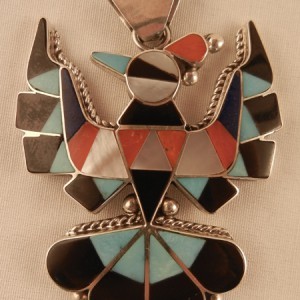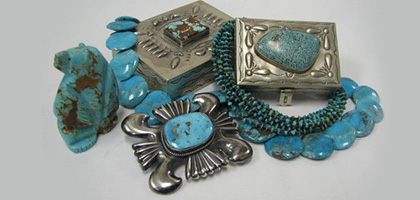

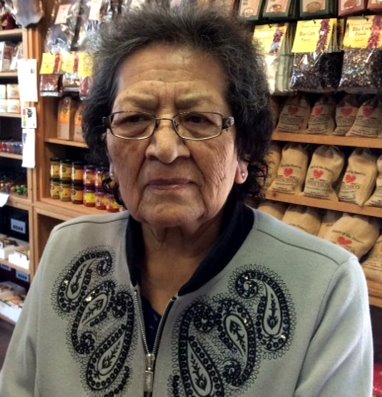
Artist Spotlight: Orlinda Natewa
Known for her fish scale designs in mostly contemporary styles, Zuni silversmith Orlinda Natewa, our featured artist this month, embodies both tradition and talent. Orlinda Natewa, born February 4, 1944 to Juanita and Lambert Homer, is a Zuni silversmith... Read more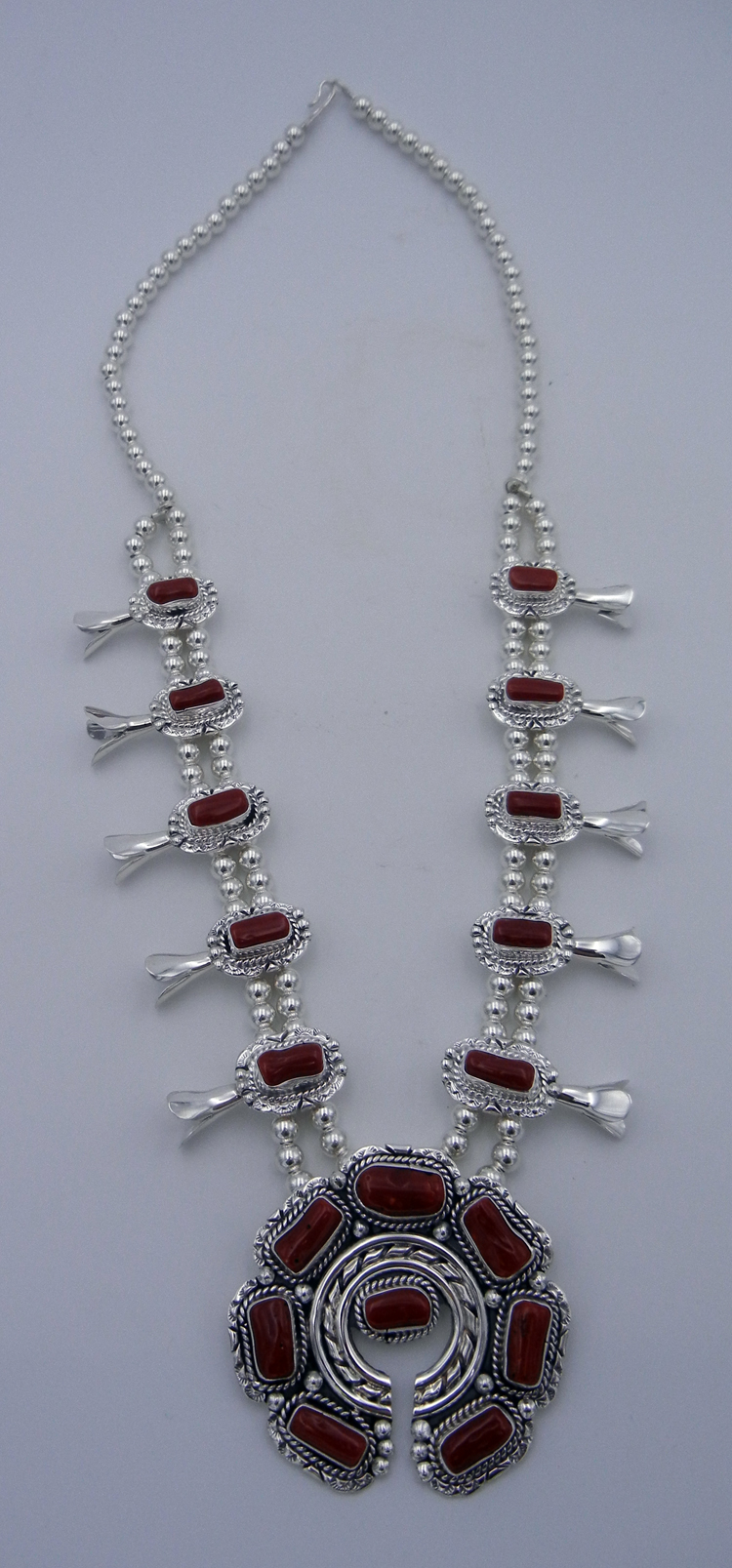
The Native American Squash Blossom Necklace
The Native American squash blossom necklace, while a Native American creation, developed slowly and is deeply rooted in non-Native American Indian culture and history. The main part of any squash (blossom) necklace, the crescent shaped pendant called the... Read moreArtist Spotlight: Ronald Chavez
It’s our pleasure to introduce you to our friend, Santo Domingo artist Ronald Chavez, who is best known for his beautiful slab and bead work. Born on April 20, 1958 to Rosalita and Remijio Chavez, Santo Domingo artist Ronald Chavez learned the craft of heishi... Read more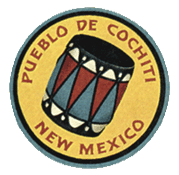
The Unique Art of Cochiti Pueblo
Every Pueblo in New Mexico has its own rich history, culture and artistic traditions, and Cochiti Pueblo is no exception. Many Cochiti Pueblo members make their living by selling their art, which includes pottery and jewelry like many other Pueblos. However, Cochiti... Read more